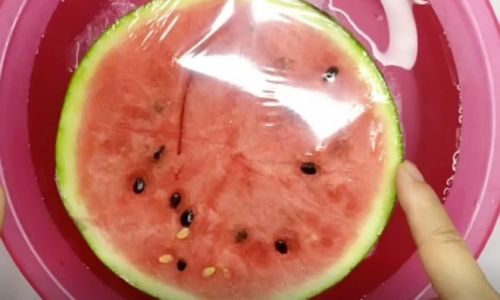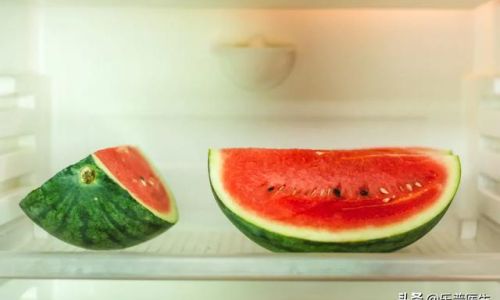Table of content
Watermelon, with its juicy sweetness and hydrating crunch, is a quintessential summer treat. However, its large size often leaves households grappling with the challenge of storing leftovers. Improper storage can lead to mushy texture, off-flavors, or even spoilage, turning this refreshing fruit into a wasted opportunity. This article explores science-backed methods, creative hacks, and practical advice to extend the lifespan of your leftover watermelon, ensuring every bite remains as delightful as the first.

Understanding Watermelon’s Delicate Nature
Watermelon (Citrullus lanatus) is composed of over 90% water, making it incredibly perishable. Its flesh is rich in natural sugars, enzymes, and antioxidants, which, while beneficial for health, also accelerate spoilage when exposed to air, heat, or microorganisms. Cut watermelon is particularly vulnerable because slicing disrupts its natural protective rind, exposing the inner flesh to environmental stressors.
Key Factors Affecting Spoilage:
- Temperature: Warm environments accelerate bacterial growth and enzymatic reactions.
- Oxygen Exposure: Oxidation breaks down nutrients and alters texture.
- Microorganisms: Bacteria and molds thrive on sugary surfaces, especially in humid conditions.
Immediate Post-Cutting Steps: The First Line of Defense
The way you handle watermelon immediately after cutting determines its longevity. Follow these steps to minimize spoilage risks:
- Use Clean Tools: Always slice watermelon with a sterilized knife and cutting board to avoid introducing bacteria.
- Remove the Rind (Optional): While the rind protects the flesh, leaving it on during storage can trap moisture, leading to sogginess. Consider slicing the fruit into cubes or wedges without the rind for easier storage.
- Pat Dry: Gently blot cut surfaces with a clean paper towel to remove excess moisture, which can breed bacteria.
Refrigeration: Your Best Friend for Short-Term Storage
Refrigeration slows bacterial growth and enzymatic activity, but improper techniques can still compromise quality. Here’s how to master watermelon storage in the fridge:
Optimal Temperature and Placement
- Store cut watermelon at 40°F (4°C) or below. Most refrigerators have a crisper drawer designed for produce, which maintains slight humidity without causing condensation.
- Avoid placing watermelon near ethylene-producing fruits (e.g., apples, bananas), as this gas accelerates ripening and spoilage.
Packaging Methods
- Airtight Containers: Glass or BPA-free plastic containers with tight-fitting lids are ideal. They prevent odor absorption and moisture loss.
- Cling Wrap: If using plastic wrap, ensure it adheres directly to the watermelon’s surface to create a barrier against air. Avoid folding excess wrap, as this can trap condensation.
- Silicone Lids: Reusable silicone lids are eco-friendly alternatives that conform to irregular shapes, reducing air exposure.
Storage Duration
- Sliced Watermelon: Lasts 3–5 days when properly stored.
- Cubed Watermelon: May last slightly shorter due to increased surface area exposure.
Freezing: The Ultimate Long-Term Solution
Freezing watermelon extends its shelf life to 8–12 months, but texture changes are inevitable. Follow these tips for best results:

Preparation for Freezing
- Cut into Cubes: Remove seeds and rind, then dice into 1-inch cubes.
- Flash Freeze: Spread cubes on a baking sheet lined with parchment paper. Freeze for 2–3 hours until solid. This prevents clumping.
- Transfer to Bags: Store in freezer-safe zip-top bags or airtight containers, removing excess air.
Thawing and Usage
- Thaw in the refrigerator overnight for use in recipes like smoothies, sorbets, or sauces.
- Frozen watermelon cubes make excellent additions to lemonade or cocktails—no thawing required!
Note: Frozen watermelon becomes mushy upon thawing, so reserve it for cooked or blended dishes rather than fresh consumption.
Alternative Preservation Methods
For those seeking variety, here are lesser-known ways to preserve watermelon:
Dehydration
- Slice watermelon into thin strips (remove rind and seeds) and dehydrate at 135°F (57°C) for 8–10 hours. The result? Chewy, candy-like treats rich in natural sugars.
Pickling
- Brine watermelon rind (the green part) in a vinegar-sugar solution with spices like cinnamon and cloves. This traditional method transforms waste into a tangy, crunchy snack.
Jam or Juice
- Simmer watermelon puree with sugar and lemon juice to create a vibrant, low-pectin jam. Alternatively, strain the puree for refreshing juice, which can be canned or frozen.
Creative Ways to Use Leftover Watermelon
Beyond snacking, leftover watermelon can elevate meals and beverages:
- Salads: Toss cubes with feta cheese, mint, and balsamic glaze for a refreshing side dish.
- Smoothies: Blend with yogurt, spinach, and honey for a nutrient-packed breakfast.
- Grilled Watermelon: Lightly char slices on a grill for a smoky-sweet flavor contrast.
- Popsicles: Puree with lime juice, pour into molds, and freeze for a guilt-free dessert.
Signs of Spoilage: When to Toss It
Trust your senses to determine if watermelon has gone bad:
- Visual Cues: Look for discoloration (grayish or brown patches), mold, or excessive liquid pooling.
- Smell: Spoiled watermelon emits a fermented, sour, or alcohol-like odor.
- Texture: Sliminess or extreme mushiness indicates bacterial activity.
Safety Note: Never taste watermelon if you suspect spoilage. When in doubt, throw it out to avoid foodborne illnesses like salmonella.

Conclusion: Savor Every Bite Responsibly
Watermelon’s ephemeral freshness doesn’t have to end with the first serving. By understanding its biology and employing smart storage strategies, you can enjoy this summer staple for days—or even months—longer. Whether you opt for refrigeration, freezing, or creative preservation, the key lies in minimizing air exposure, controlling temperature, and acting swiftly after cutting.
Next time you’re faced with a half-eaten watermelon, remember these tips to reduce waste and maximize flavor. After all, preserving nature’s sweetness is both an art and a science—one that rewards your taste buds and the planet alike.






0 comments